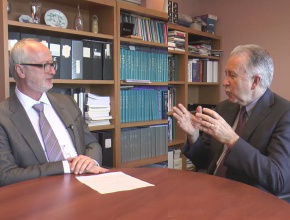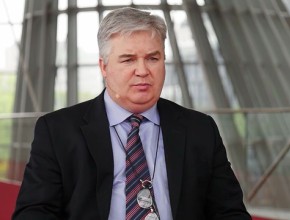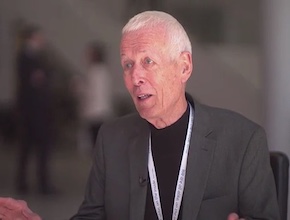References
Lonn EM, Bosch J, López-Jaramillo P, et al; HOPE-3 Investigators. Blood-Pressure Lowering in Intermediate-Risk Persons without Cardiovascular Disease. N Engl J Med. 2016 Apr 2. doi: 10.1056/NEJMoa1600175.Yusuf S, Bosch J, Dagenais G, et al; HOPE-3 Investigators. Cholesterol Lowering in Intermediate-Risk Persons without Cardiovascular Disease. N Engl J Med. 2016 Apr 2. doi: 10.1056/NEJMoa1600176.
Yusuf S, Lonn E, Pais P, et al; HOPE-3 Investigators. Blood-Pressure and Cholesterol Lowering in Persons without Cardiovascular Disease. N Engl J Med. 2016 Apr 2. doi: 10.1056/NEJMoa1600177.
Sever PS, Dahlöf B, Poulter NR, et al; ASCOT investigators. Prevention of coronary and stroke events with atorvastatin in hypertensive patients who have average or lower-than-average cholesterol concentrations, in the Anglo-Scandinavian Cardiac Outcomes Trial–Lipid Lowering Arm (ASCOT-LLA): a multicentre randomised controlled trial. Lancet. 2003 Apr 5;361(9364):1149-58. PubMed PMID: 12686036.
Dahlöf B, Sever PS, Poulter NR, et al; ASCOT Investigators. Prevention of cardiovascular events with an antihypertensive regimen of amlodipine adding perindopril as required versus atenolol adding bendroflumethiazide as required, in the Anglo-Scandinavian Cardiac Outcomes Trial-Blood Pressure Lowering Arm (ASCOT-BPLA): a multicentre randomised controlled trial. Lancet. 2005 Sep 10-16;366(9489):895-906. PubMed PMID: 16154016.
Brunström M, Carlberg B. Effect of antihypertensive treatment at different blood pressure levels in patients with diabetes mellitus: systematic review and meta-analyses. BMJ. 2016 Feb 24;352:i717. doi: 10.1136/bmj.i717. PubMed PMID: 26920333; PubMed Central PMCID: PMC4770818.
SPRINT Research Group, Wright JT Jr, Williamson JD, Whelton PK, et al. A Randomized Trial of Intensive versus Standard Blood-Pressure Control. N Engl J Med. 2015 Nov 26;373(22):2103-16. doi: 10.1056/NEJMoa1511939. Epub 2015 Nov 9. PubMed PMID: 26551272; PubMed Central PMCID: PMC4689591.
ACCORD Study Group, Cushman WC, Evans GW, Byington RP, et al. Effects of intensive blood-pressure control in type 2 diabetes mellitus. N Engl J Med. 2010 Apr 29;362(17):1575-85. doi: 10.1056/NEJMoa1001286. Epub 2010 Mar 14. PubMed PMID: 20228401; PubMed Central PMCID: PMC4123215.
SPS3 Study Group, Benavente OR, Coffey CS, Conwit R, et al. Blood-pressure targets in patients with recent lacunar stroke: the SPS3 randomised trial. Lancet. 2013 Aug 10;382(9891):507-15. doi: 10.1016/S0140-6736(13)60852-1. Epub 2013 May 29. Erratum in: Lancet. 2013 Aug 10;382(9891):506. Coffey, C S [aded]. PubMed PMID: 23726159; PubMed Central PMCID: PMC3979302.
Part I: Heart Outcomes Prevention Evaluation (HOPE)-3 trial
Akbar Panju: I am very privileged to be with Professor Salim Yusuf of McMaster University from Hamilton, Ontario this afternoon. Professor Yusuf is a world-renowned researcher in cardiovascular disease. What he has taught us over the last 2 decades has changed the way we practice cardiovascular medicine, which has led to saving a lot of lives around the world. These past few days, Professor Yusuf had 3 articles in a leading medical journal, the New England Journal of Medicine. I am going to ask him some questions about these articles. First, Professor Yusuf, what led to doing those trials?
Salim Yusuf: We tested in this trial the role of lipid lowering with a statin and blood pressure (BP) lowering with a low-dose combination of candesartan and thiazide. The concept behind it is that the association between lipids and cardiovascular disease, or BP and cardiovascular disease, is graded with no threshold, yet most of the trials were done only in those with either high risk, high lipid levels, or high BP levels. There is a graded association between BP and lipids versus cardiovascular disease, but most of the trials were done in people with high risk, high BP, or high lipid levels. However, the majority of cardiovascular disease, though, [affects] other people, so we wanted to test whether lowering lipids in people without cardiovascular disease but with average lipid levels or lowering BP in those with an average BP and at average risk would be beneficial.
Roman Jaeschke: You described the concept of those trials, or of this trial. What were the results?
SY: There were 3 main findings. The first was that statins, which lowered low-density lipoprotein [cholesterol] (LDL), were beneficial irrespective of the starting level of LDL, irrespective of any clinical criteria, which meant that almost everybody in the trial benefited from statins, and there was a 25% risk reduction of cardiovascular events.
With BP lowering, we saw no overall benefit. The benefit was seen, though, clearly in those in the upper third of BP range, which is the hypertension range; it was neutral in the middle range; and it tended to be harmful in those with the lowest BP. This is consistent with the external data – the findings from both the LDL-lowering part and the blood pressure-lowering part.
There was a group that received combined lipid lowering and BP lowering versus neither. In this group, if a person was hypertensive and you gave both statins as well as BP lowering, there was a 40% risk reduction, which is substantial. But if you were not hypertensive, using a statin alone gave you the entire benefit, which is about 30%.
The results of the study are important because the approach that we used was simple: no dose titration, single-fix doses, very little monitoring or very infrequent monitoring, and no LDL or blood levels that were required to get into the study. The study has huge implications because it means a majority of people in middle age who have 1 risk factor – which most people do – will benefit from statins, and if they have high BP, you would lower BP as well. Equally, one of the things that the hypertension guidelines do is they stress lowering BP, which is fair, but they do not stress that you should add a statin. This emphasizes that BP lowering and the statin together is important for hypertension.
RJ: Describing the results you actually keep coming to statins, even though one of the major components was the BP.
SY: Absolutely. Even if you have hypertension, statin is as important as BP lowering.
RJ: So that is quite a new concept and practice-changing finding.
SY: There has been one previous trial that did show similar things, the ASCOT study. So the two together reinforce each other.
Part II: Blood pressure treatment thresholds and targets
RJ: There was a whole number of papers or meta-analyses recently, which made people a little bit confused, I suspect. We have seen a meta-analysis of BP treatment in diabetes, which showed that aiming at a BP less than 140 mm Hg or starting BP at 140 mm Hg was actually harmful. Your data, you mentioned lowest, middle, and upper [BP ranges]?
SY: They are qualitatively similar in that in people with a BP below 140 mm Hg there was no benefit, in people below 130 mm Hg systolic BP there was a trend towards harm, and in those in the classic hypertension range there was benefit. So it is consistent.
RJ: How would you reconcile it with the results of the SPRINT trial, which told us to target 120 mm Hg or less?
SY: There were important differences in the populations included. The SPRINT trial first included people who already had severe hypertension and were already on 2 drugs before they got into the trial. And the question they therefore asked was: Should we be more aggressive?
The second thing is, they were high-risk people, with a risk that was twice the risk of the HOPE-3 populations. Twenty percent had vascular disease, another 30% had end-organ damage, so they were high-risk people.
The results of the SPRINT trial must also be taken in the context of 2 things. One is the side effects: there were a lot of side effects in SPRINT, including emergency room visits and hospitalizations for acute kidney injury, so the SPRINT approach is less practical for the average patient. The second aspect of SPRINT is, you have to take it in the context of the ACCORD study in diabetics, which had a similar design but did not show the same level of benefit. There was a nonsignificant trend. There is a third trial, the stroke prevention study 3 (SPS3) that Dr. [Robert] Hart and Dr. Oscar Benavente did, which also had a similar level of BP lowering as SPRINT or ACCORD. That too only had a modest effect that was not statistically significant.
So if you take the totality of the evidence, SPRINT is a bit of an outlier. I believe the direction of benefit is right but the size of the benefit may be exaggerated. And there are some curious things about SPRINT that require explanation. First, there was a very little effect on reduction of stroke, and stroke is the most sensitive endpoint to BP lowering, so you wonder why. The second thing is, not only was there a reduction in cardiovascular disease deaths, which is expected and plausible, but there was also a reduction in non-cardiovascular disease deaths, which has not been seen in other trials; this means perhaps the trial results were exaggerated by the play of chance. My reading: if you take SPRINT, ACCORD, other trials all put together with aggressive BP lowering, in high-risk people there is a modest additional benefit, but the benefit is perhaps half the size that SPRINT showed.
RJ: So if I were to translate it, if you had a patient with a BP persistently around 140 mm Hg, which is the current threshold to recognize hypertension, without many risk factors you would probably say…
SY: Leave them alone.
RJ: And the more risk factors they have, the earlier you will start to treat?
SY: Exactly. [If there is] either vascular disease or more risk factors then treat them earlier, but in all of them use a statin.
RJ: That is very practical, thank you.
Part III: Milestones of cardiovascular prevention
RJ: Professor Yusuf, you have been in the forefront of cardiovascular prevention for the last 20 or 30 years. Would you comment about the milestones that you observed through those years? You mentioned to us that cardiovascular mortality is lowered by half within our lifespan.
SY: A single milestone is hard to say but I think there are 2 or 3 general things that have helped. The first is that we have good epidemiology, and that showed tobacco is bad for you – and tobacco is really, really bad; it is the biggest killer in the world. Second is, we know that BP is a bad risk factor, so is lipids, and this came from good epidemiological studies. So the epidemiological studies were the starting point.
Then we tested the hypotheses in trials and it is the collectivity of the evidence – it was not 1 trial or 2 trials. There are about 25 trials on statins with lipid lowering and most of them are consistent. There are just as many trials on BP lowering. While they seem to differ in slight ways, overall the totality of the evidence shows benefit.
Conceptually, the 2 milestones I would say were the large epidemiology and the large trials. It is a mixture of these 2 methods. Of course, you need drugs to lower BP, and so good pharmacology led to greater benefit. So it was a confluence of all these factors that came about, and you might call that confluence evidence-based medicine – others may call it another name. But I think the reduction in cardiovascular disease is a testimony to these combined efforts.
RJ: Thank you.
This interview was recorded at the 2nd McMaster International Review Course in Internal Medicine in Kraków, Poland. To learn more, visit www.mircim.eu.
 English
English
 Español
Español
 українська
українська









